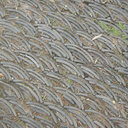Seasonal variation of pheophorbide a and flavonoid in different organs of two Carpinus species and its correlation with immunosuppressive activity.
Sleutelwoorden
Abstract
The genus Carpinus of Betulaceae is the most widely distributed in the European landscape. This study reports a comparative study based on the pheophorbide a and flavonoid content from the two main species of the genus Carpinus, Carpinus betulus and Carpinus turczaninowii, respectively, in Nanjing, China. The pheophorbide a and flavonoid content depends on the organ, species, and season. HPLC analysis showed that the pheophorbide a and flavonoid levels were the highest in May and June, respectively, from the leaves of C. betulus 'Fastigiata.' In contrast, the content of pheophorbide a and flavonoid in the stems of C. betulus 'Fastigiata' or in other species was low. The immunosuppressive effects of the ethyl acetate extracts and methanol extracts from the two Carpinus species were also evaluated. The ethyl acetate extracts of C. betulus 'Fastigiata' in May and the methanol extracts of C. betulus 'Fastigiata' in June showed better immunosuppressive activity than in other seasons, which coincided with the content of pheophorbide a and flavonoid, respectively. Our findings indicated that C. betulus 'Fastigiata' can serve as a medicinal plant against inflammation because of its pheophorbide a and flavonoid content.



